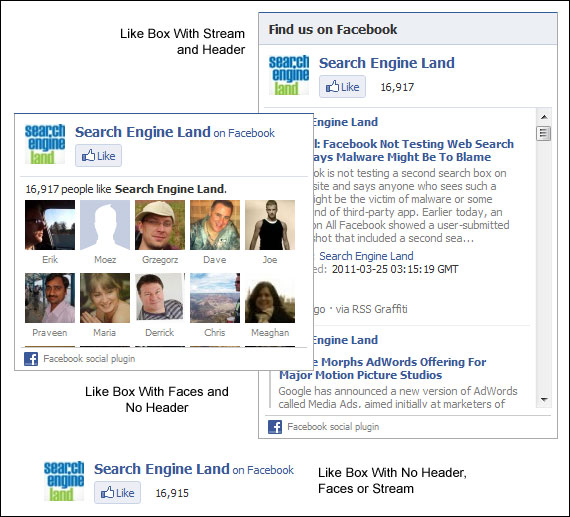How To Convert Website Visitors Into Facebook Fans
Whereas Twitter direct follow buttons are not easy to implement, Facebook makes it simple to “Like” a Page on Facebook (i.e., to become a “fan” of the person or organization represented by that Facebook Page) without actually needing to visit Facebook. The alternate method of enticing visitors to become fans is simply to link to […]
Whereas Twitter direct follow buttons are not easy to implement, Facebook makes it simple to “Like” a Page on Facebook (i.e., to become a “fan” of the person or organization represented by that Facebook Page) without actually needing to visit Facebook.
The alternate method of enticing visitors to become fans is simply to link to the Page on Facebook, where there is a prominent Like button at the top of the Page.
There are advantages and drawbacks to each method.
The obvious benefit of a direct Like is that the user is connected in one step, without the danger of failing to click on the Facebook Page Like button. The biggest drawback is not being able to control the call-to-action or its appearance: linking to a Facebook Page is equivalent to linking to a Twitter profile, and provides the opportunity to closely associate following on Twitter and becoming a fan on Facebook.
What optimization can be performed at the page level depends on which method is used, though of course both a direct Like button and a linked call-to-action can be used on the same page, and their performance compared.
Positioning
If using the Like button directly, it is important to separate this from any other Like buttons on the page, and ideally identify for the user what it is they are about to Like. When linking to a Facebook Page, the same positioning considerations apply as with a Twitter linked call-to-action.
Call-to-Action
For Page Like buttons, “Like” seems the most natural label, and “recommend” seems awkward. For linked Facebook Pages, you can do away with “Like” altogether, and try things like the older, descriptive “become a fan on Facebook” or even “follow us on Facebook.”
Like Box
The Like box is a sort of extended version of a Like button for Pages, and displays a “Find us on Facebook header,” the number of users that Like the Page, recent posts from the Page, pictures of profile photos and, of course, a like button (“recommend” is not available).
The header, post page stream and photos are all optional.
Common Facebook Like Box Variations
The Like box takes up a fair of amount of real estate with all of its functions enabled, but can be pared down and employed as a beefier call-to-action to Like a Page than is offered by the Like button itself.
For active sites with large numbers of users and good content, the Like box may serve as an enticement by showcasing the Page’s usefulness and popularity.
Read on for other useful tips in this series:
Contributing authors are invited to create content for Search Engine Land and are chosen for their expertise and contribution to the search community. Our contributors work under the oversight of the editorial staff and contributions are checked for quality and relevance to our readers. The opinions they express are their own.
Related stories
New on Search Engine Land
